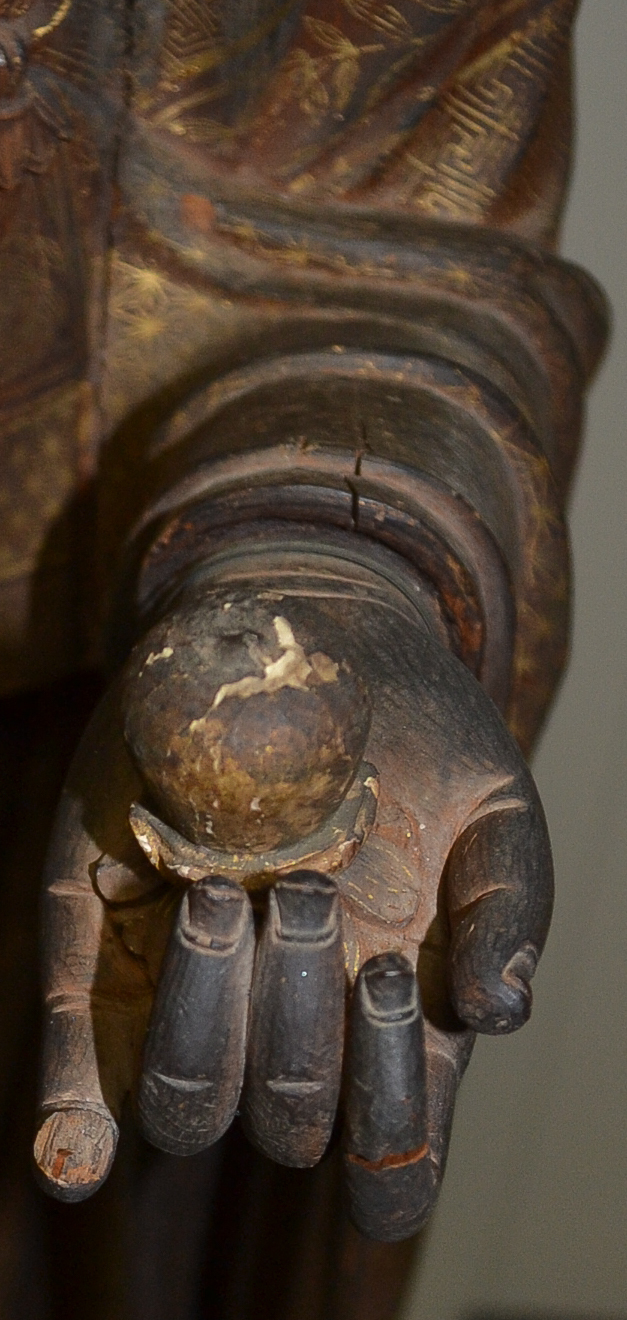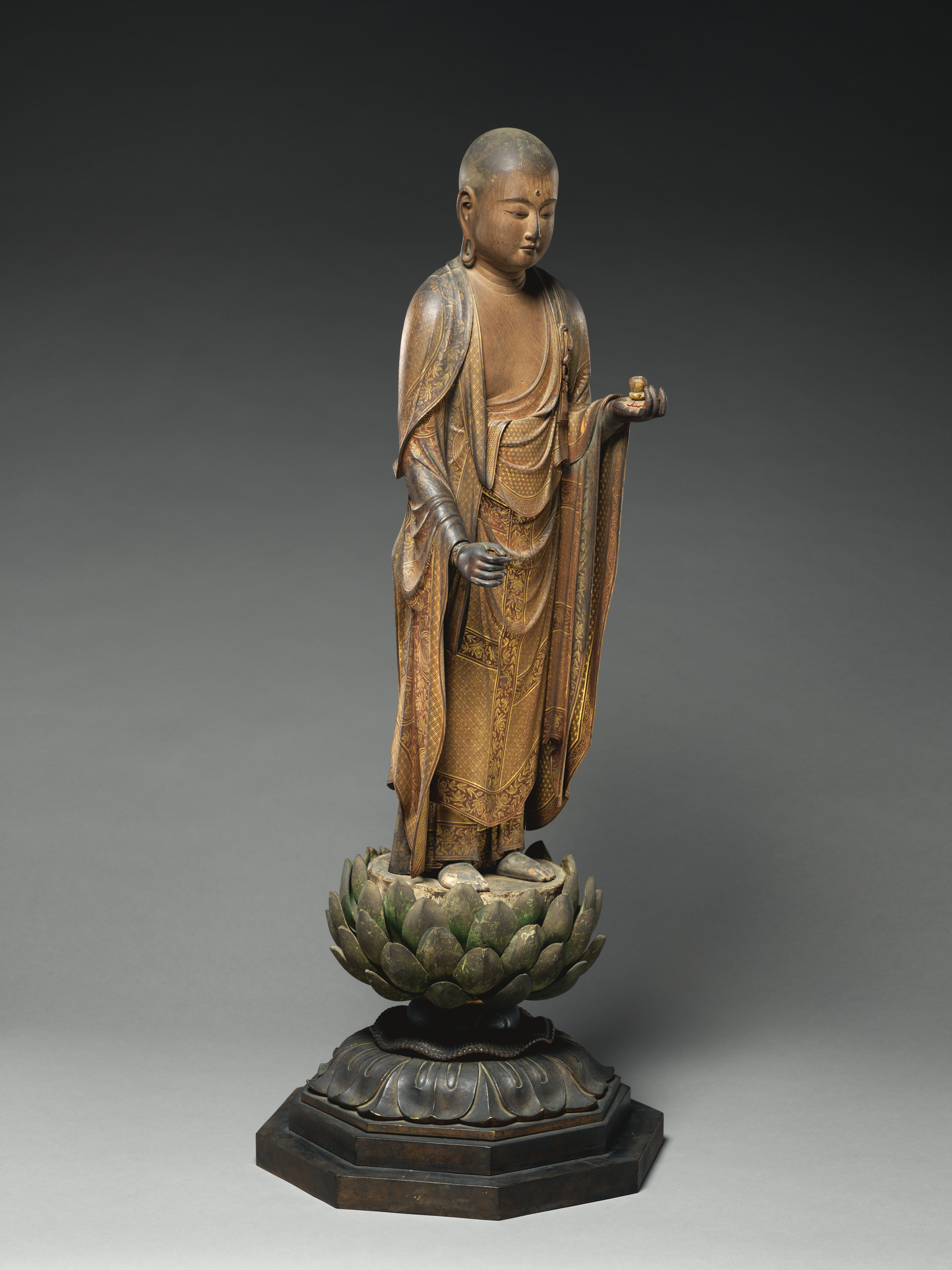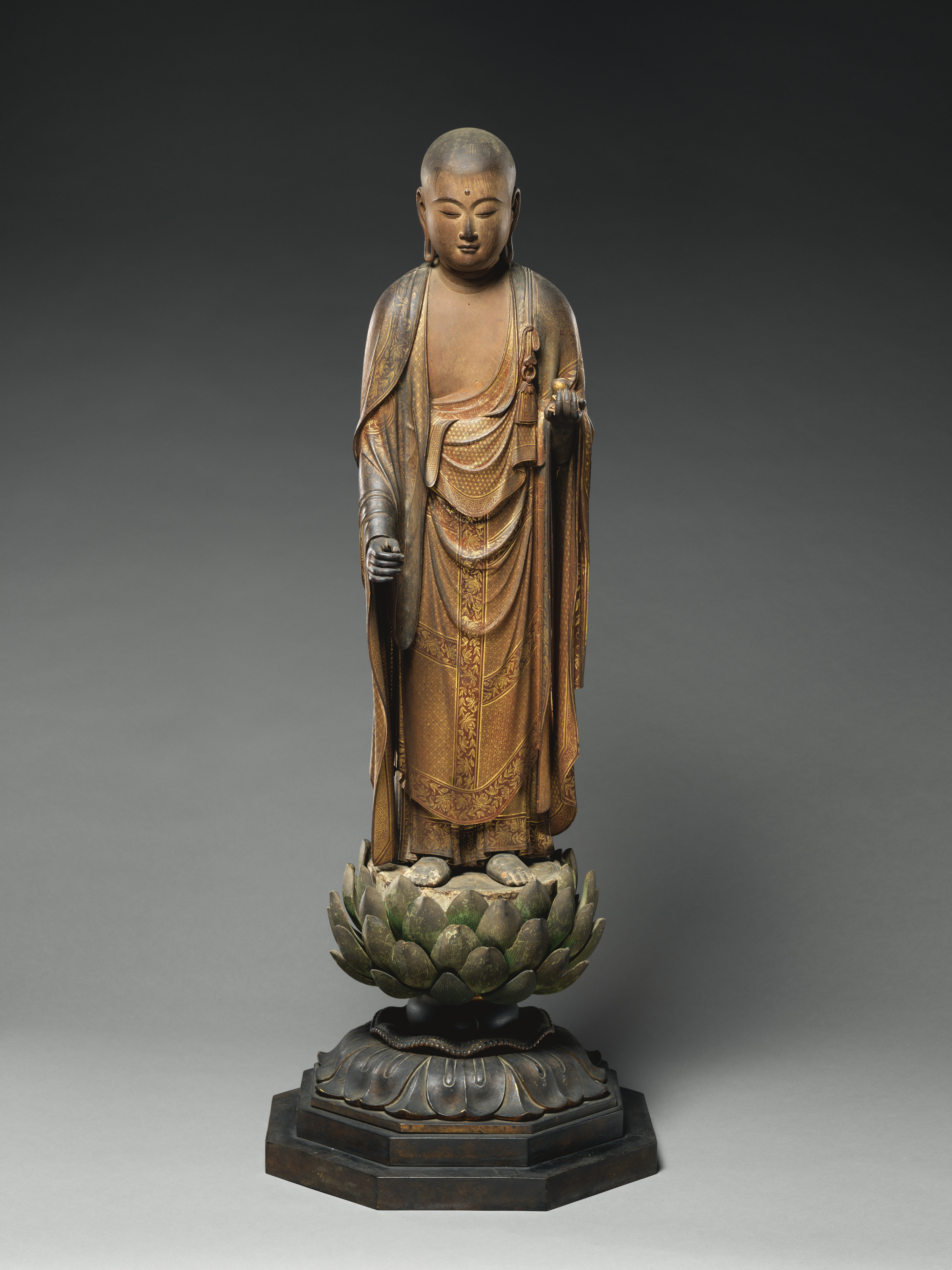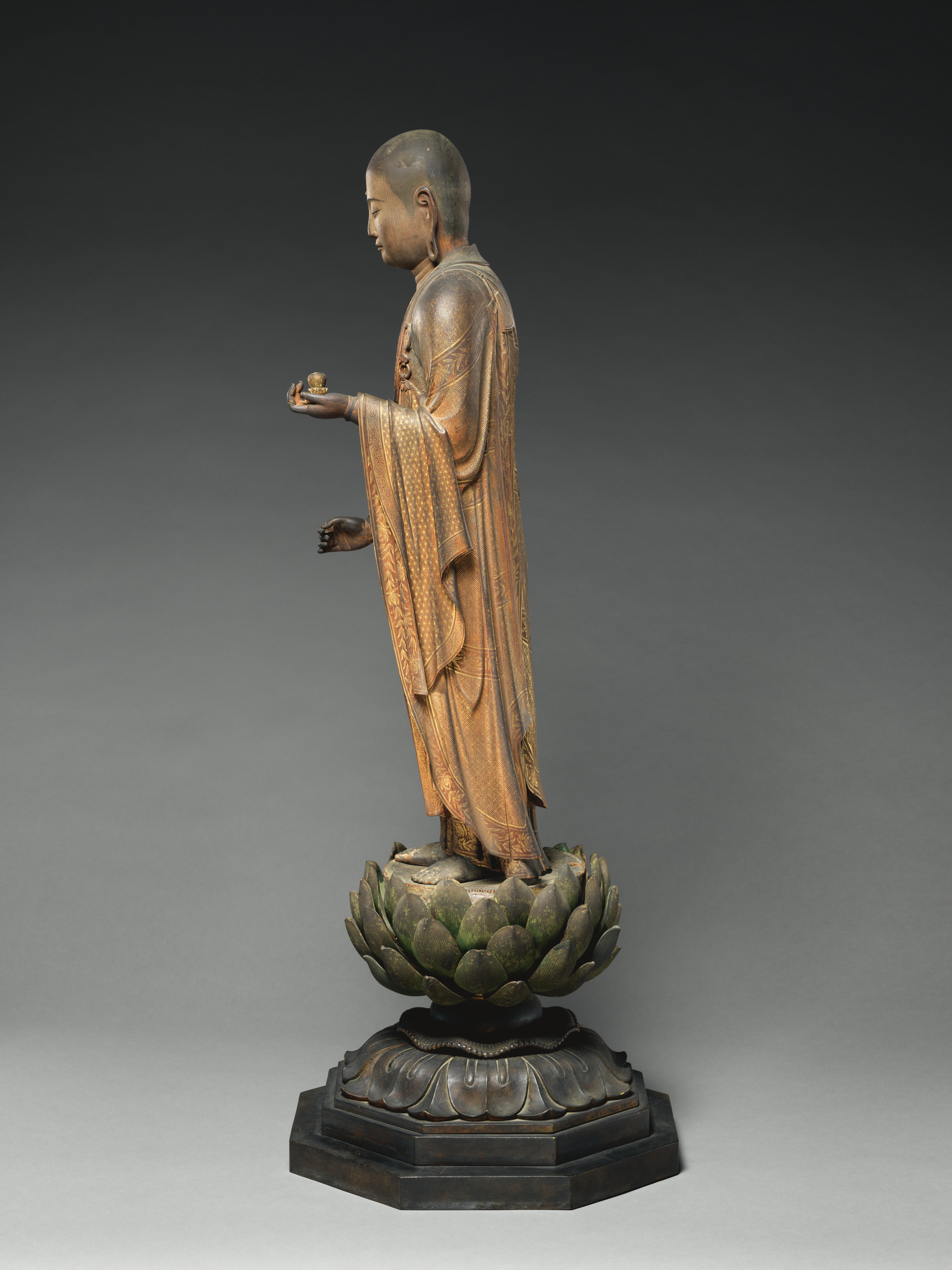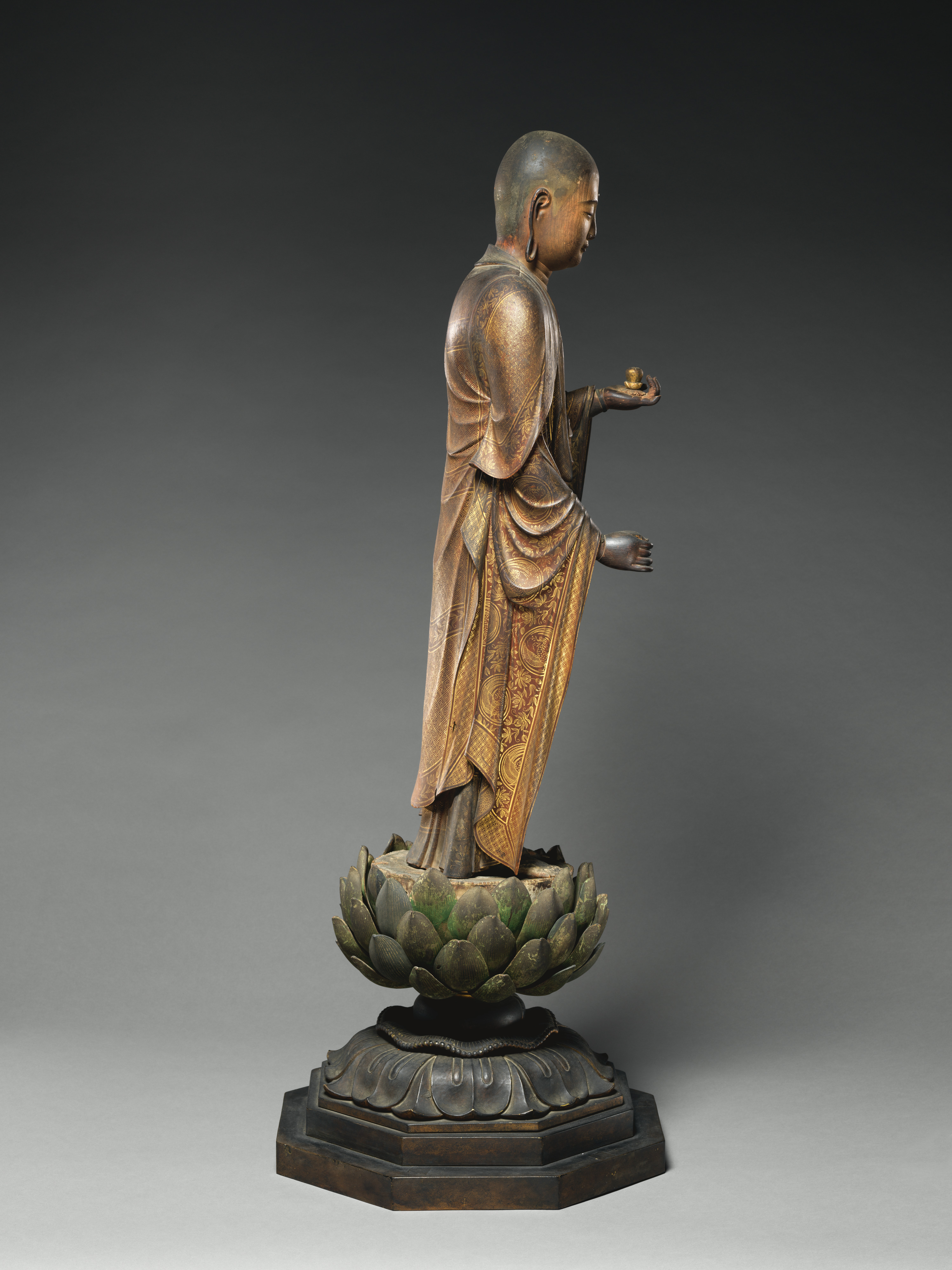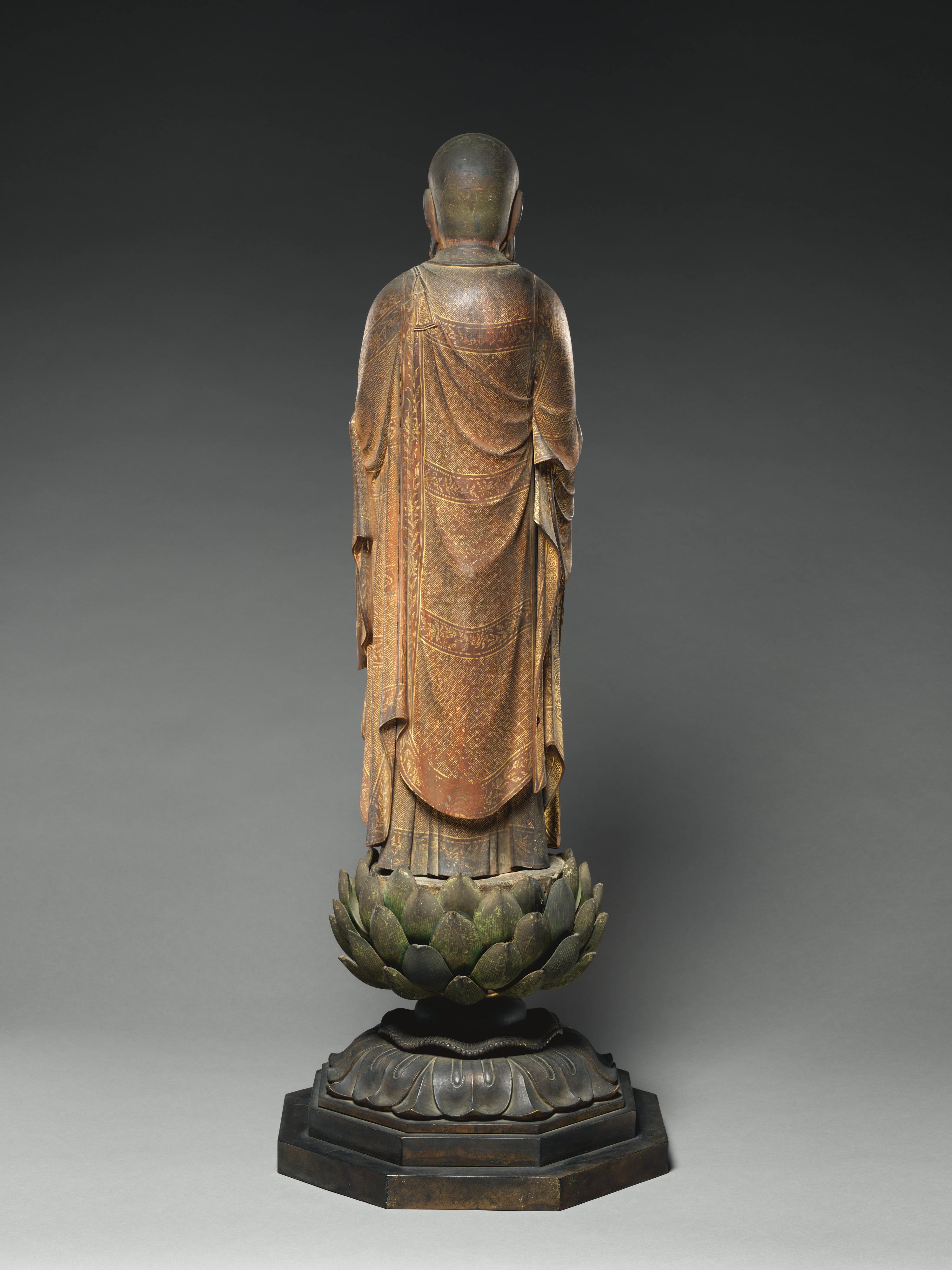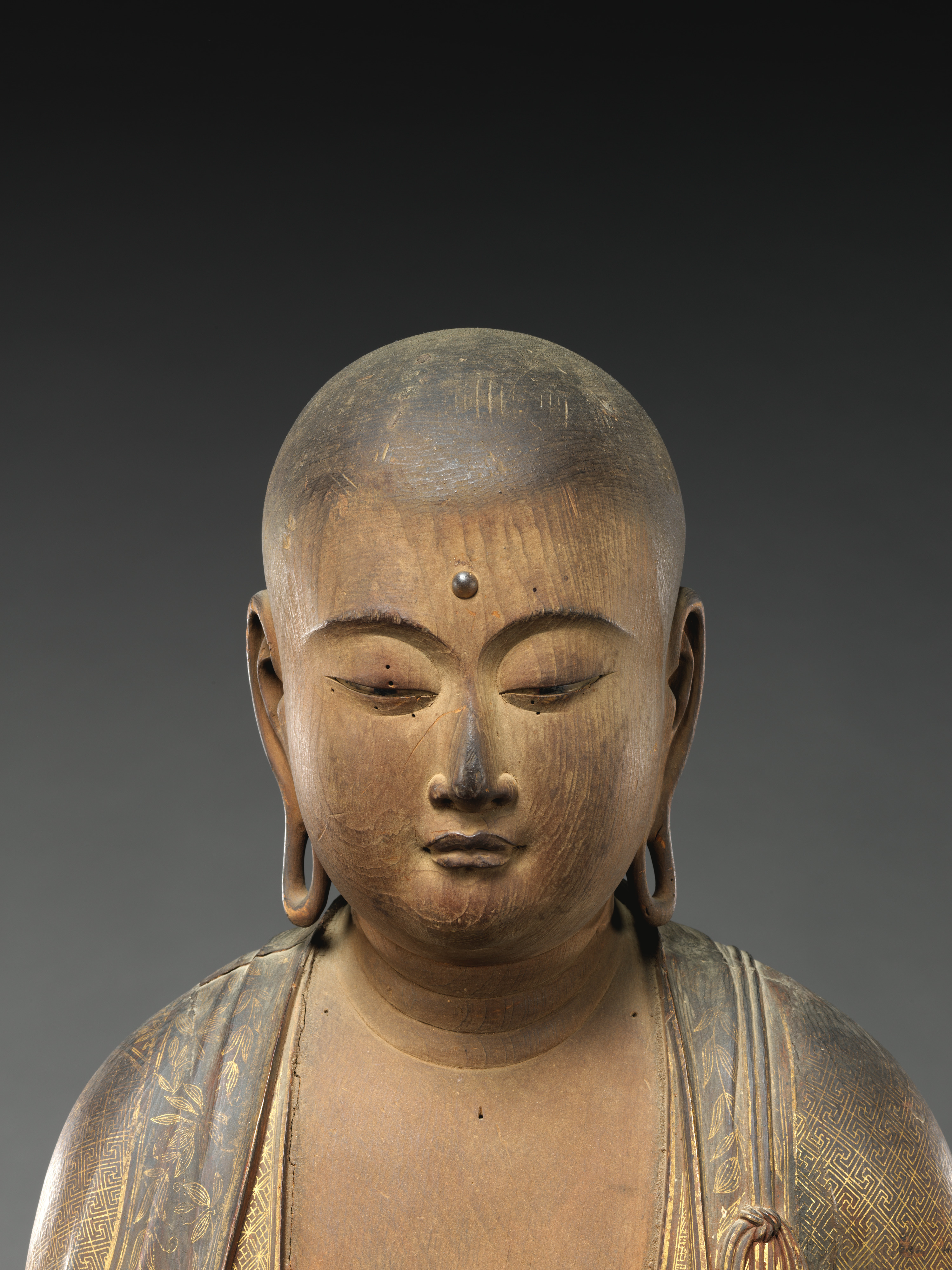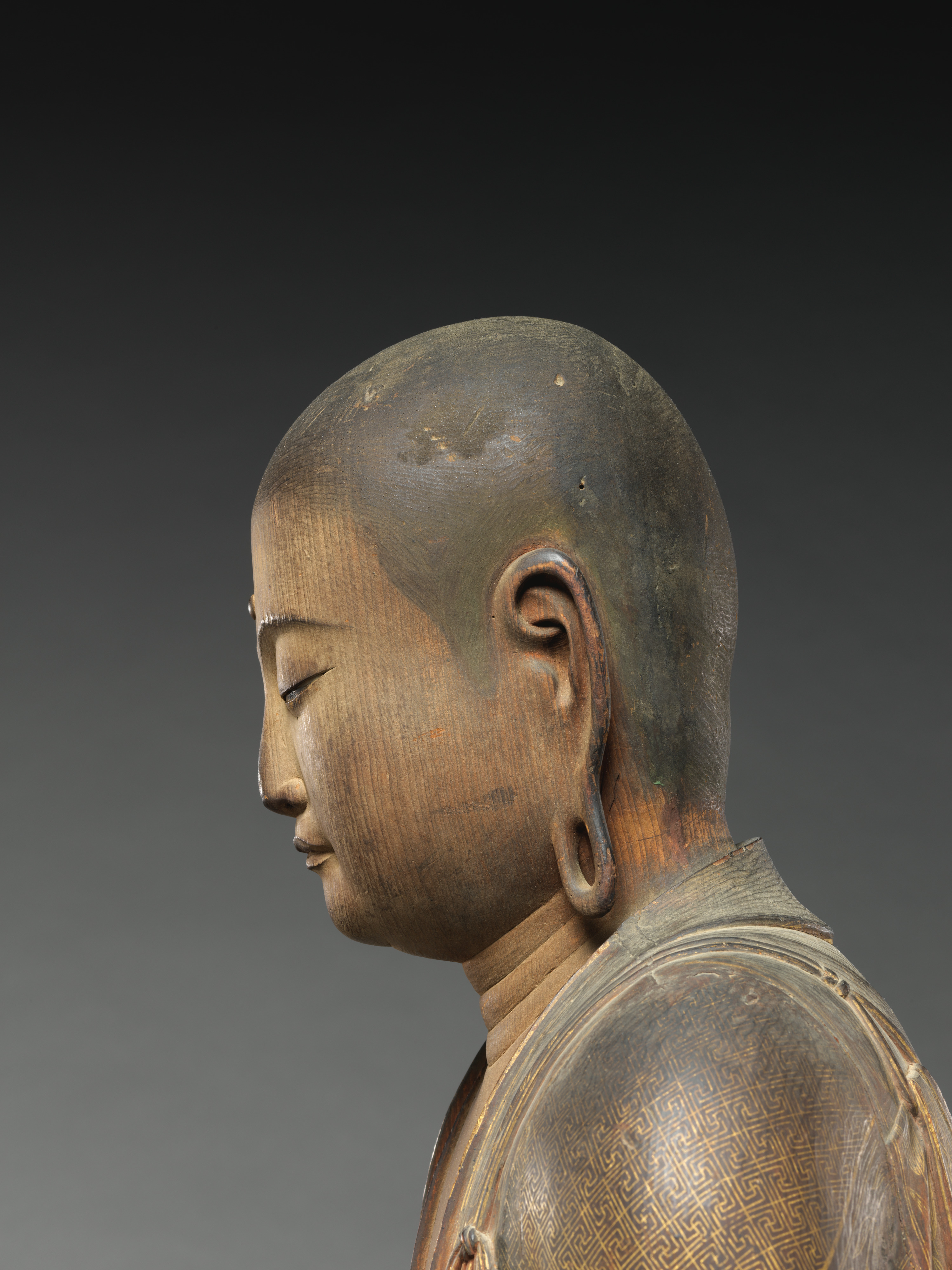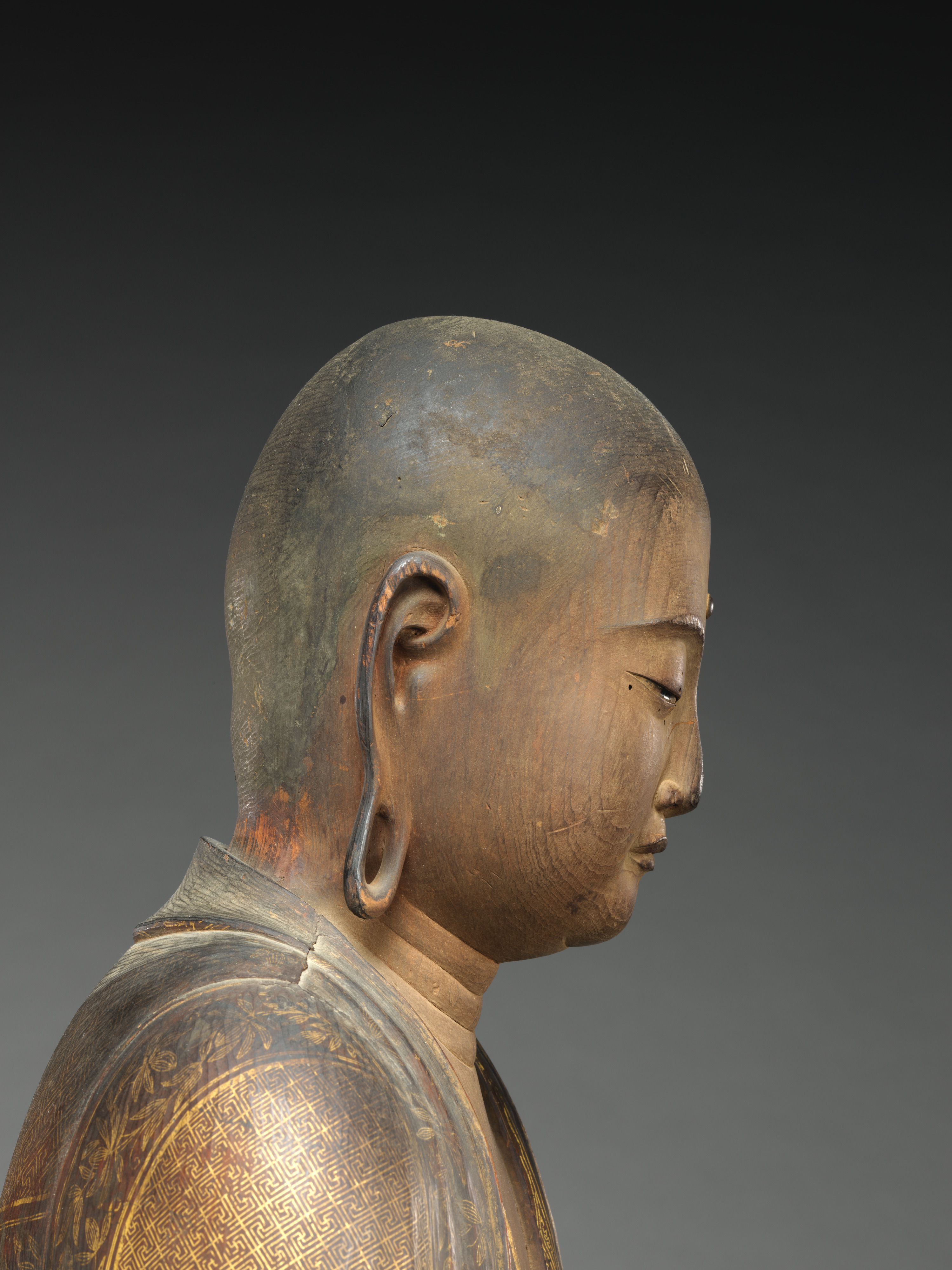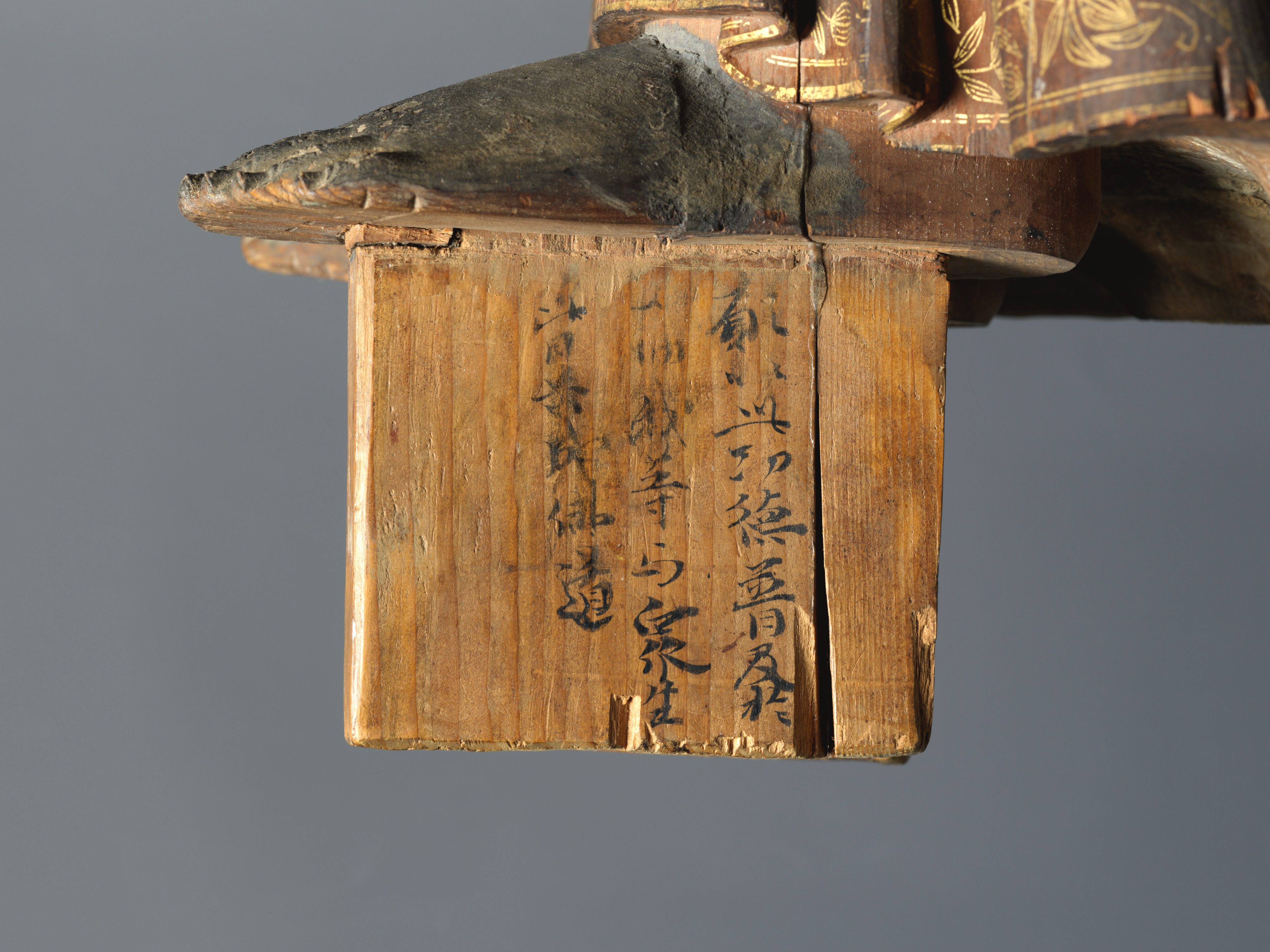The Bodhisattva Jizō
Intan Japanese
Jizō is an enlightened being who, out of compassion, has chosen to lead others along the Buddhist path. In Japan he is best known for rescuing souls from hell and for protecting children. Jizō is portrayed as a youthful monk with a shaved head and wears a patchwork surplice (kesa) over his robe. He wields a monk’s staff (shakujō) in his right hand—which he rattles to awaken humans from their delusions—and in his left hand holds a jewel of wisdom that grants all wishes. His long earlobes and the urna on his forehead are symbols of his enlightened state. This sculpture is one of only three surviving works on which the name of the sculptor Intan is recorded. Here, it appears on one of the wood tenons used to slot the bodhisattva’s feet into the lotus base and states that the work was completed on the twenty-fourth day of the ninth month of Shōō 4 (1291).
On view for rotations 3 & 4.
Due to rights restrictions, this image cannot be enlarged, viewed at full screen, or downloaded.
This artwork is meant to be viewed from right to left. Scroll left to view more.



